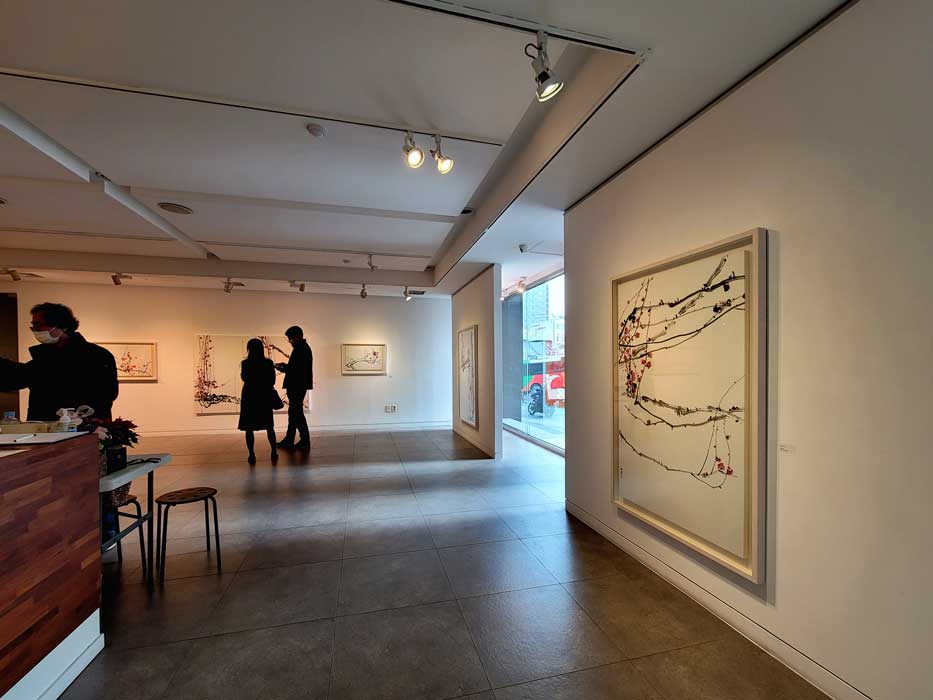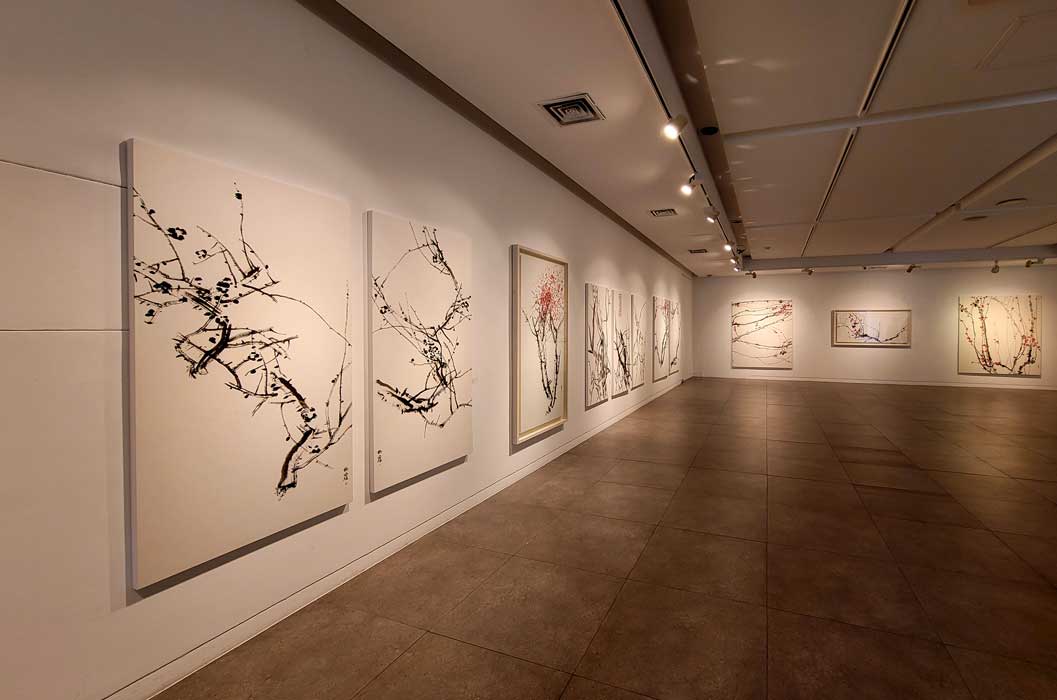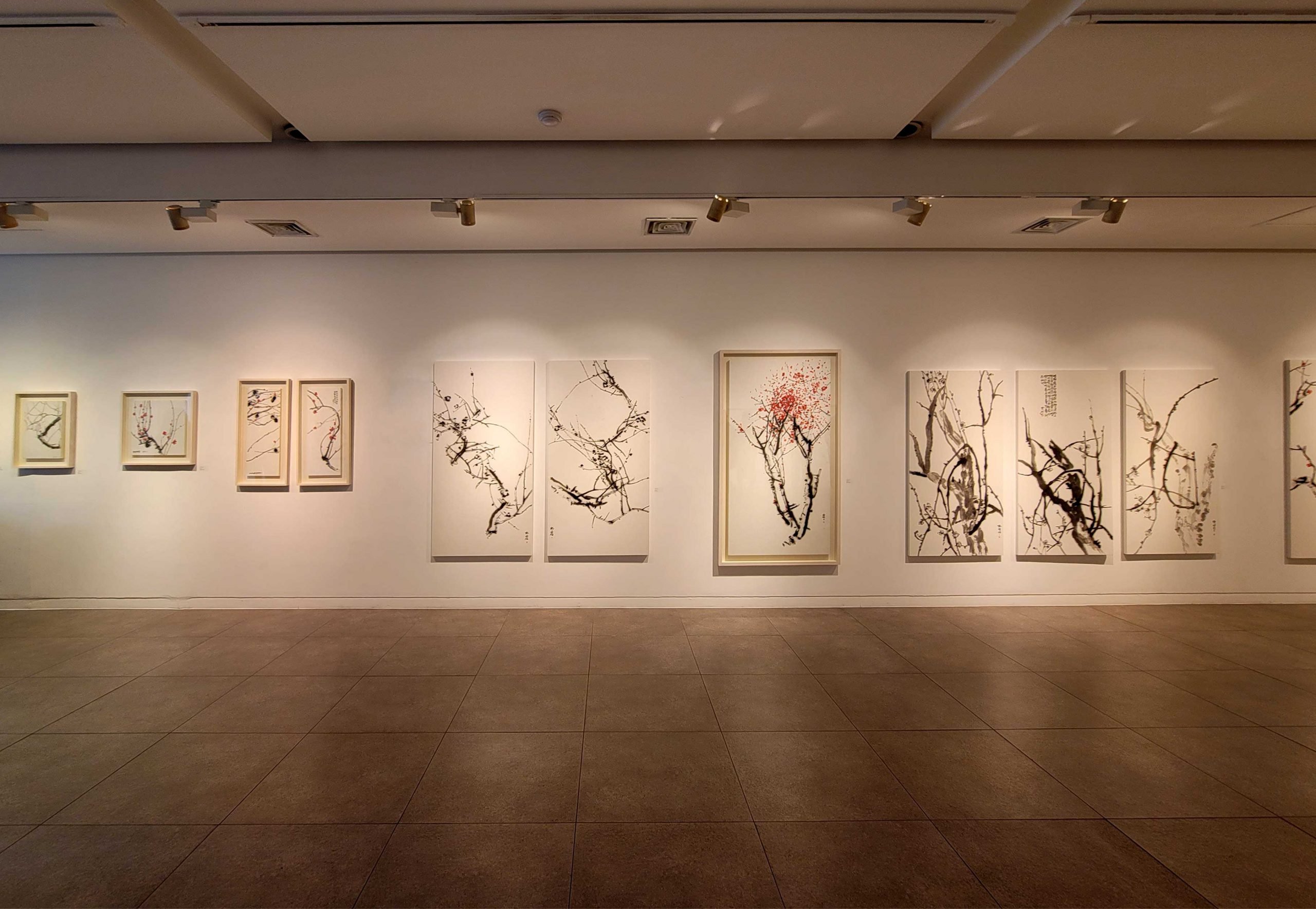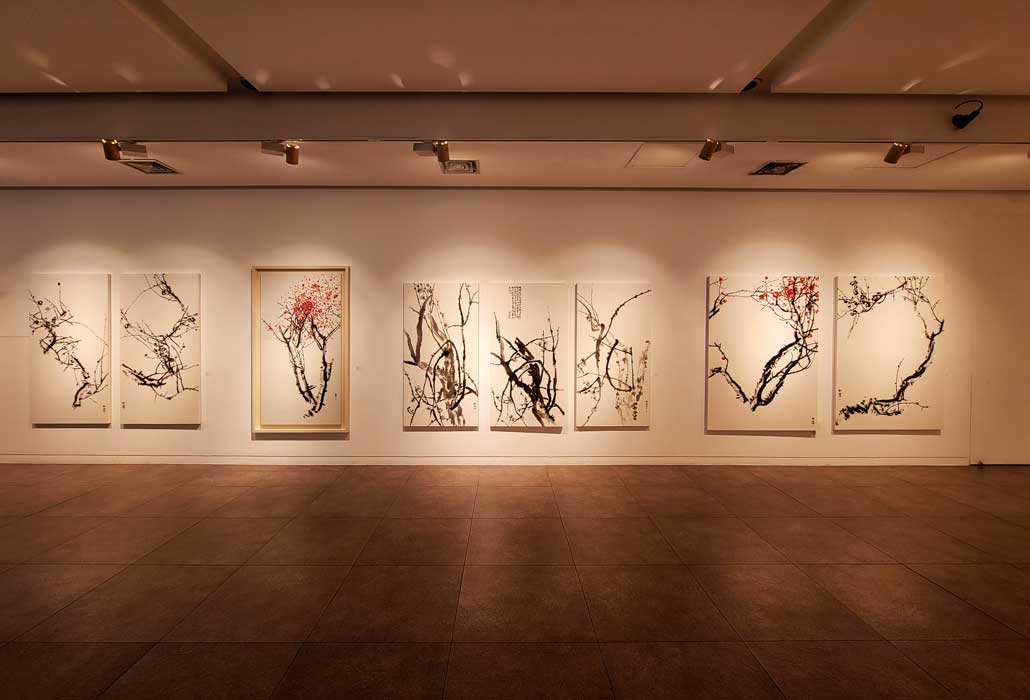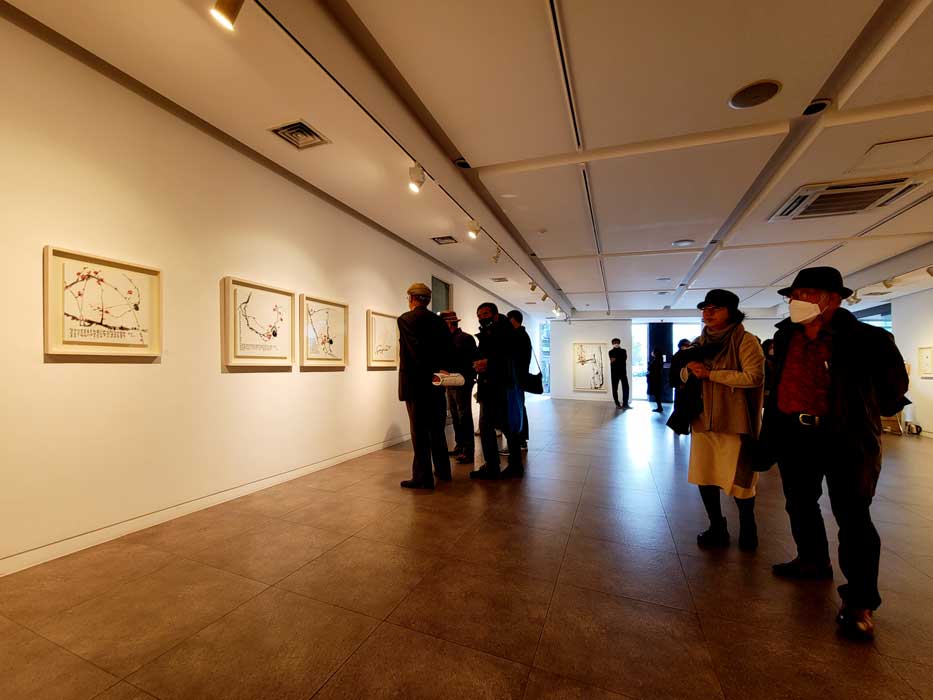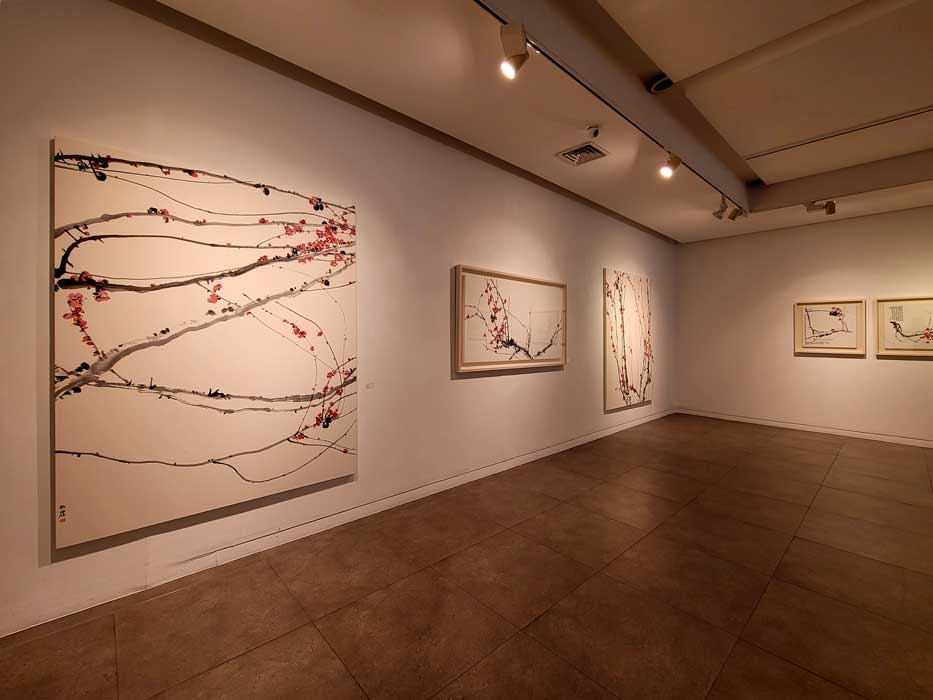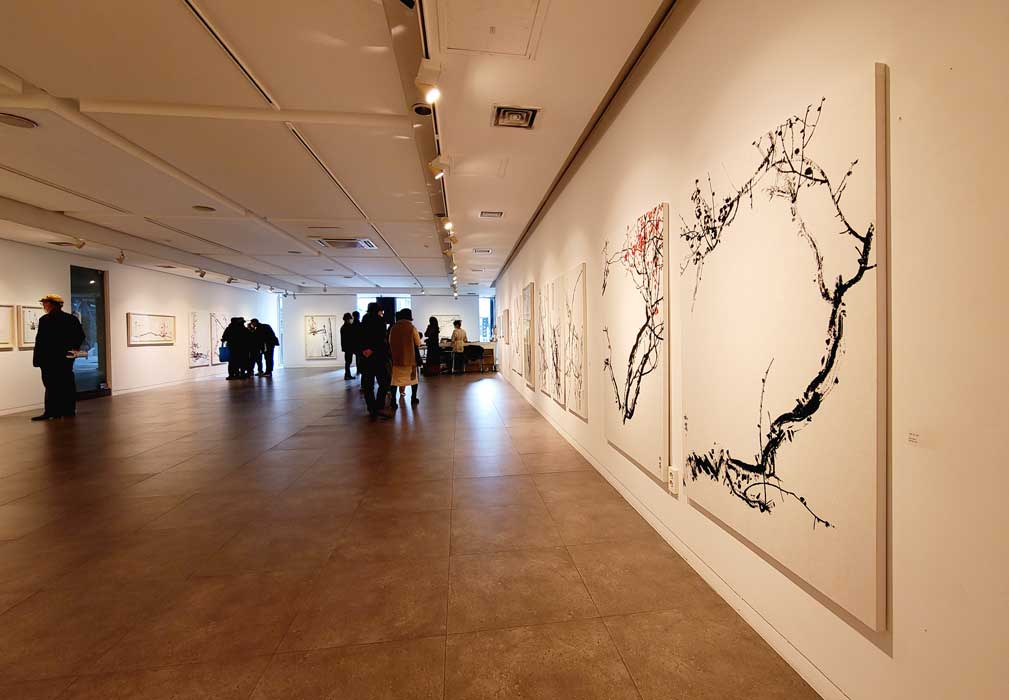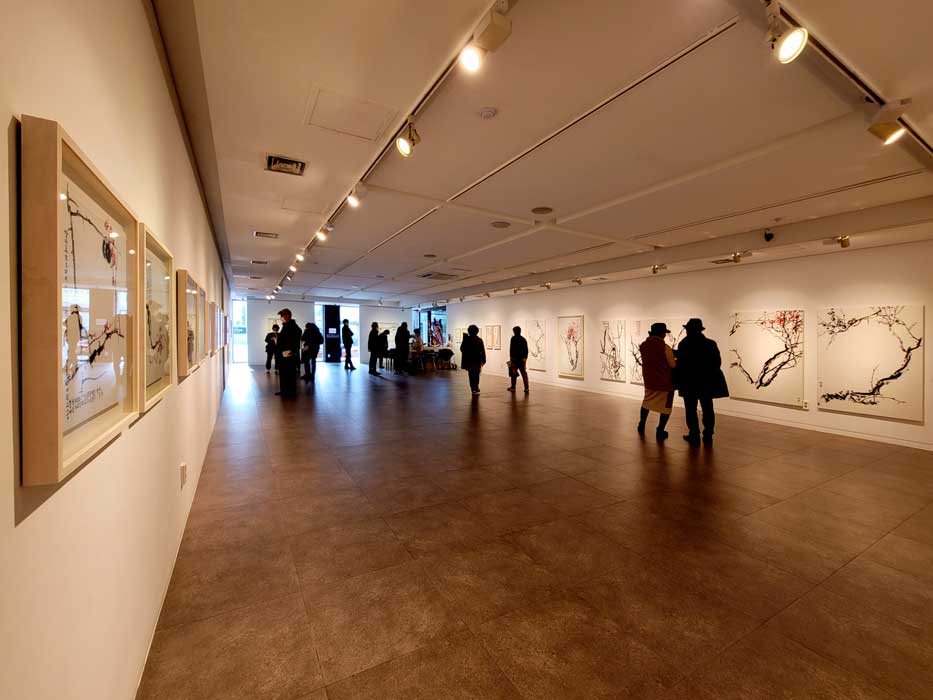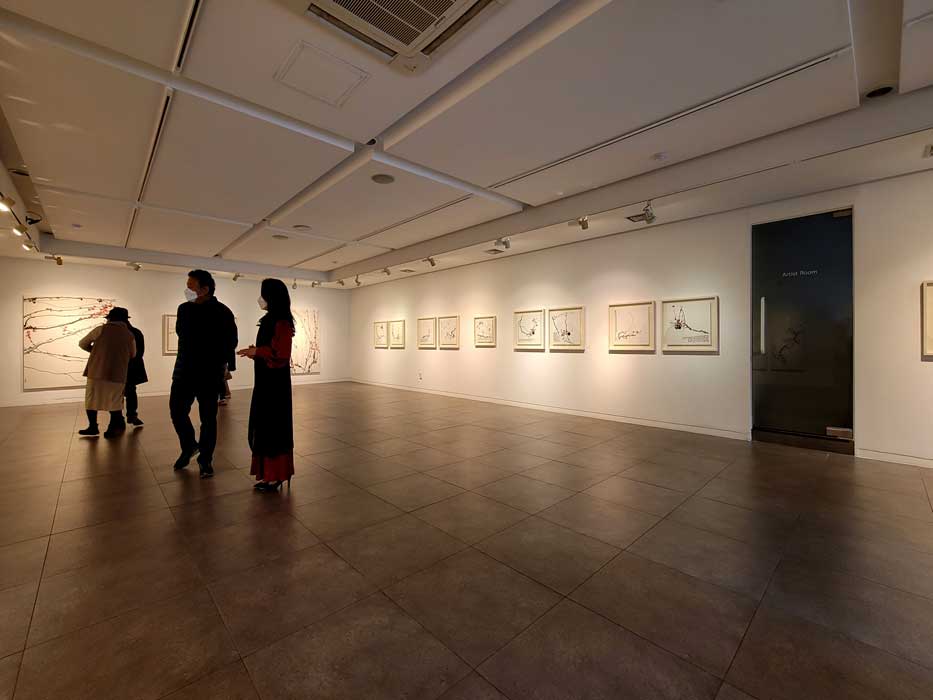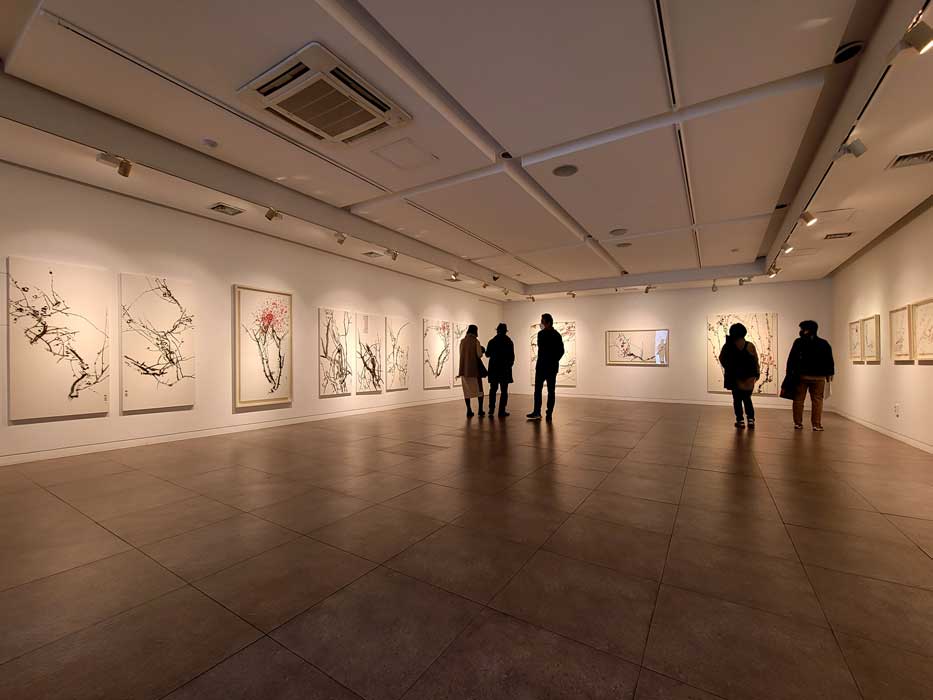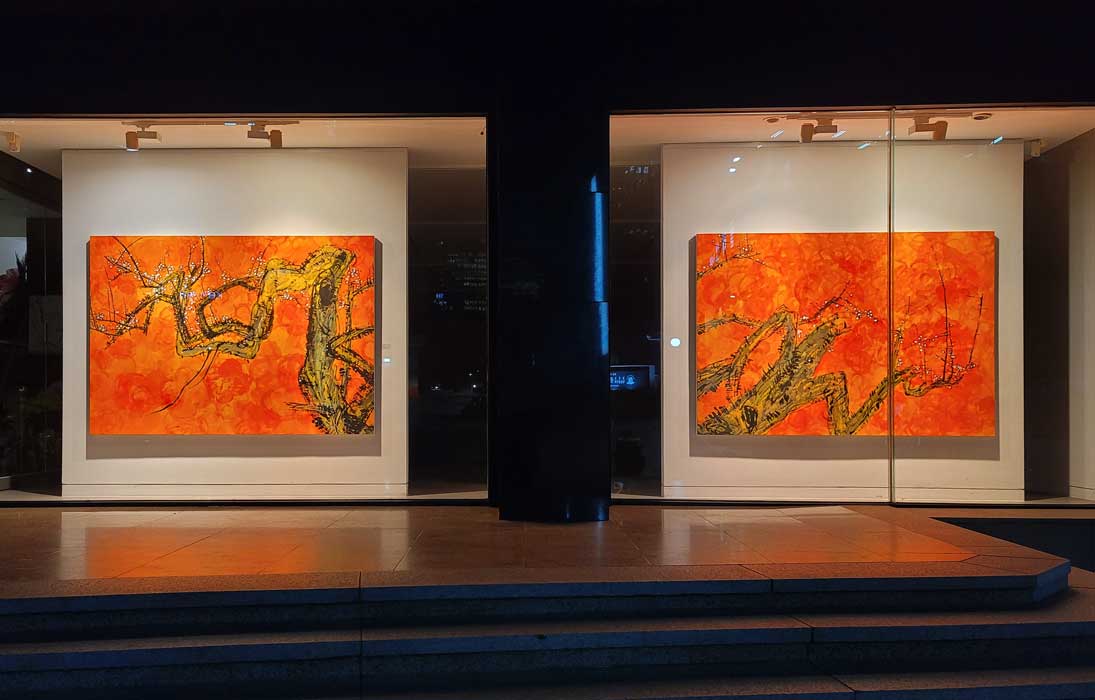The Dignity, Softness and Elegance of the Plum Flower Beloved by the Artist
Kim Chong Geun (Art Critique)
One of the most popular pictorial motifs that is chosen by artists is the flower. This is because flowers usually are symbols of flamboyance and basically refer to beautiful women or love.
However, if there is another reason as to why artists like to paint flowers is because of the unique appeal and colors that only flowers possess other than the symbolic meaning of flowers in general.
Even so, flowers are not always drawn in colors in Eastern paintings. One such example is none other than the ink wash painting.
Ink wash paintings usually refer to texture strokes and accentuated expressions of line drawings(白描畫) as a relative concept to general paintings, black and white paintings or colored paintings.
Of course the history of this began in China and was transmitted to Korea since then. The actual source of this kind of ink wash painting goes all the way back up the ancient times of the 7th~8th century and includes the ‘pamuk(破墨) method’ where the three dimensional feeling of mountains or trees are expressed in the texture strokes and the ‘balmuk(潑墨) method’ where the ink spreads out without using the contour lines.
One of the most representative drawing styles amongst them is the ‘maenangukjuk(梅蘭菊竹)/plum flower, orchid, chrysanthemum and bamboo)’ which belong to the ‘sagunja (四君子)/the four gracious plants)’ group.
The ancestors of old tried to project thoughts, emotions and spirits through paintings of the fundamentals and philosophy of paintings on the basis of this kind of paintings. In that perspective, the artist Park Myungim’s work does not veer far from this ink wash painting format.
Nevertheless, what makes her paintings special and unique is that the theme of her work in all of her paintings use plum blossoms as a pictorial motif. Furthermore, most of these plum blossoms can be seen as having its own individuality consisting of only traditional inks and flowers. We usually look upon plum flower paintings as depiction of the flower trees beloved by classical scholars. This is because plum flowers are symbolic of their immaculate character
and personality.
Plum flowers are said to never sell their fragrances short throughout their life span and are therefore symbols of fidelity and integrity at its utmost value.
If we were to consider that the artists such as Su Shi(蘇軾, 1036~1101) and Mi Fu(米芾, 1051~1107) during the Northern Song Dynasty drew up ink wash paintings as an expression of their internal thoughts, the plum flower paintings of Park also makes us truly believe that it is not that different in depth and ideology of that time.
The aspect that stands out the most in Park’s plum flower paintings is the innocence and elegance of the simple plum flower while still putting importance to vacuous spaces.
Not only that, the plum blossoms are contained within the frame just like in the style of the literary scholars who had pursued a consistent style without any deviations yet reveal without fail the tasteful lines of the plum demonstrating the quintessential Korean aesthetics.
Amongst the myriad plum artworks, there seems to be a wild celebration of plum festival going on with the exquisite meeting of details and the freedom of rough yet rapid brushstrokes that appear to have drawn up the painting in one stroke.
We are constantly able to bring up to mind the plum flower scenes which signal the end of winter as well as the beginning of spring in all her work while looking at the bloomed plum flowers that have sprung up from the snow just like the late classical scholars who took pleasure in seeking out the said flowers in the snow. The delicate and fragile stems of the plum flower are maintained while still being able to cultivate new buds and eventually give off the ultimate exotic plum flower fragrance having gone through the hardships and the adversities.
Perhaps the artist herself has sold off her soul being lured out of heart and soul to the plum flower’s form and fidelity.
It is common practice to paint plum flowers independently even though there are artwork which insert sparrows, magpies or moons but in Park Myungim’s case, she puts a lot of weight in expressing
the impromptu impression by snaring the attention of the viewer with the simple yet clean ink wash plum flower depictions. It is for certain that the artist herself is well aware of what the real meaning of plum paintings is and understands fully how the charisma of the flowers should be drawn out.
This is reminiscent of the phrase “poets will never know how the plum stem exists above all else, take another closer look at the green leaves and stems” from the poem by Su Shi (1036~1101) regarding the plum flower.
The large plum flower painting that demands our utmost attention shines through by interlacing the softness and the roughness in all parts of the canvas with the ink wash.
Park’s color and brushstrokes of the red plum are brilliant while the flowers are small and dazzling red in relative comparison which is more than enough to give a three dimensional feeling of the red plum just with the line drawings and color.
Therefore, the beholders of the painting are enabled to see that the deep scent of the plum blossoms and the flowers blooming from the young branches are in possession of the internal emotions and stoic nature of the plum flower that the artist wants to contain herself.
We can see that the emotions of the artist herself wanted to breathe life into her work from the ideals of the flower that blooms first while still in the midst of the cold spell in early spring, which is the stoic overcoming of extreme difficulties and hardships.
The sentiments of the artist appears to be very similar to the Korean poem that was composed by Yi Hwang(李滉 1501~1570) which goes “Leaning on the mountain window alone, the night air is cold. A round moon rises above the branches of the plum bloomed branches. A gentle breeze comes without hailing, and a clear scent fills up the yard automatically.”
The plum flower here in question is the red plum so perhaps the reason as to why the color red was given overall is because there is the exorcism belief that the color red wards of evil spirits along with expressing the volition of one mindedness of “one piece of red mind”. That is why the artist’s red plum seems to be giving us a noble message beyond that of symbolism.
On a personal note, Myungim’s plums are definitely not lacking in form and composition in their own way, but the red plum blossoms especially seem to have a way of lingering vividly in front of my eyes.
The red plums which have been showcased ambitiously in huge scale work recently have especially gone beyond the simple ink lines demonstrating a
sense of freedom and daring reaching to the level of unpredictable variations just like the ink washed plums in the initial stage.
Furthermore, there exists a powerful vitality that gives life even if it may appear slight and delicate. Thus, the elegant plum flower blossoms add on to the artist’s dignity and even the scene of the red plums which are not the white plums bathed in moonlight will be enough to move an elderly scholar of old to shed a tear or two.
The above details are more than enough reason for the artist to be obsessively preoccupied and full of passion about the red plum. The artist Park Myungim already has had the experience of enhancing her skills by countlessly copying over 10 paintings by Oh Changseok in a brilliant way.
On top of that, with years of practicing calligraphy, she has mastered the Eastern/Western art of brush wielding and has established a firm foundation as an artist in this field and has now made her successful debut in the Oriental Painting circle as well.
Even though she already has enough skills under her belt, I would like her to aspire for higher planes of achievement. Rather than adhering to a repetitive style, I would like to suggest that she attempt to adopt a style of artwork that is more traditional inclined such as in the ‘line drawings’ and the innovative ‘ink wash’ paintings.
Just like Jo Heeryong (趙熙龍, 1789-1866) who was a virtuoso in red plum paintings during the 19th century and employed the exceptional and unheard method of drawing in the white and red plum in one tree simultaneously, I would wish her to be more ambitious in reaching a higher plane as an admiring critic.
I have the highest hope that she would leave behind masterpieces where she keeps the balance of not being too tied up in the past or throwing it away altogether yet keeping the traditions alive somehow in a resolute manner for forthcoming new styles of artwork.
This also may be my final reason in giving strength to the artist’s philosophy toward the ideal world in the charm of plum blossoms beloved by classical scholars. This exhibition is the first solo exhibition for Park Myungim to debut as a painter. She has put all her initial dreams and ideals in the plum flowers. All my encouragements and congratulations go out to her so that her hopes and dreams about the ideal world through the plum flowers can be offered to the people in the most dignified manner possible. May your first step as a painter be as beautiful and elegant as a red plum flower….






































